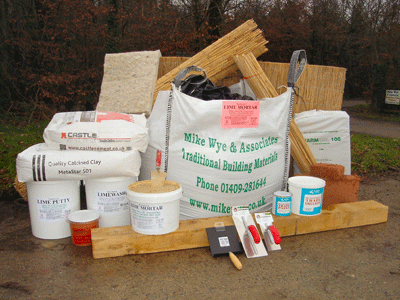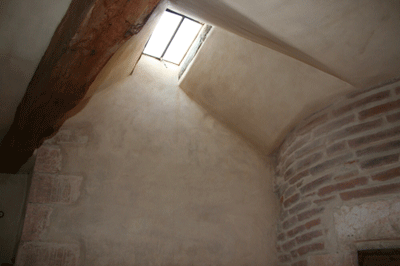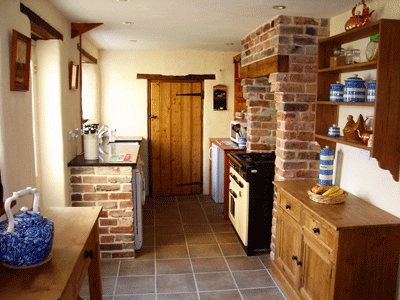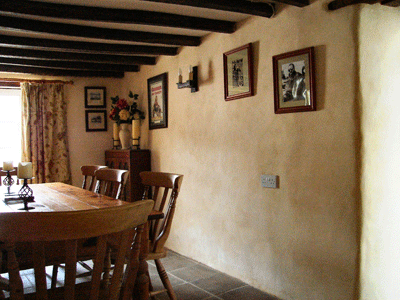Conserving period buildings and lime
Many period building owners have a perception that using lime is prohibitively difficult. Not the case, says Ben Smith

Lime is the principal binder of most traditional mortars, plasters and renders and is used in all historic building conservation and renovation projects in some form or another. The world of lime is a daunting place for a beginner, with different types of lime, a variety of mix ratios and widely differing opinions when talking to suppliers and practitioners. However, once you begin using lime you will find that most opinions around its difficulty are purely conjecture and you will rapidly develop your own views and techniques. This article is intended to give you a brief introduction to the different types of lime-based products that are commonly used.

The three types of lime available are Lime Putty based mortars & plaster, Natural Hydraulic Limes and Hydrated Lime. Firstly Lime Putty based mortars are the most breathable and are the mortars traditionally used on solid wall buildings. Hydrated lime should not be used as a binder for a lime mortar, as it could be too weak and will not give you an adequate mortar for building or plastering. Natural Hydraulic Limes (NHLs) are slightly more complicated as they have different strength bandings and chemical properties, they are as follows:
NHL2 - The weakest; usually used on soft materials for internal plastering / repointing NHL3.5 - This is the general purpose NHL and can be used internally and externally for building and rendering NHL5 - NHL5 is the strongest and we only recommend this for flooring, underwater work and very exposed environments

As a general rule of thumb we recommend that you use English and German NHLs internally as they have a larger proportion of free lime, this means that they are much stickier but have a slower set. Whereas the French NHLs are stronger and set quicker so are better for building and external works. Please note that with all work you must make sure that the mortar you make from them is weaker than the masonry that you are using it on. Render and pointing are sacrificial and they should be allowed to erode away rather than the surrounding stonework.

Before deciding which type of lime to use the most important part of lime work is ensuring the breathability of the building, from the bare substrate through to the breathable paint applied to the plaster/render. We have known some people who have applied a full breathable lime render and painted it with an acrylic-based masonry paint, therefore sealing the building. This keeps the moisture within the building and makes the breathable lime render largely a waste of time and money.

There are also two other areas that are regularly overlooked when applying lime mortars which can lead to problems. The first task is the initial damping of the substrate to control the suction when applying the lime mortar; if the moisture gets sucked out of the lime too rapidly then it can cause large shrinkage cracks. The second task is protecting the fresh lime plaster from the elements after applying it. This is usually done by hanging hessian over the area. This protection is important because if it dries out to fast then you will encounter the problems described above. In addition to those problems the heavy rain could wash the lime render off the wall.

Hopefully this brief description of lime and its uses will help alleviate some existing problems and help avoid any possible mistakes in the future. The most important thing to remember when working on a property is to use materials on it that are applicable to the era in which it was built. If lime was not originally used in its construction then it should not be introduced into the fabric of the building.
Exquisite houses, the beauty of Nature, and how to get the most from your life, straight to your inbox.
Ben Smith works for Mike Wye & Associates, a specialist supplier of natural building and decorating products and one of the UK's leading lime specialists. They have been training people in the techniques needed to maintain and conserve traditional buildings for many years. In a further move to help those looking for advice, the company has an excellent free guide that can be downloaded from www.mikewye.co.uk or will be posted to anybody who calls their office on 01409-281644. The guide is an introduction to the materials and concepts, and offers practical advice on plastering, pointing, rendering, limewashing and more.

Country Life is unlike any other magazine: the only glossy weekly on the newsstand and the only magazine that has been guest-edited by His Majesty The King not once, but twice. It is a celebration of modern rural life and all its diverse joys and pleasures — that was first published in Queen Victoria's Diamond Jubilee year. Our eclectic mixture of witty and informative content — from the most up-to-date property news and commentary and a coveted glimpse inside some of the UK's best houses and gardens, to gardening, the arts and interior design, written by experts in their field — still cannot be found in print or online, anywhere else.
